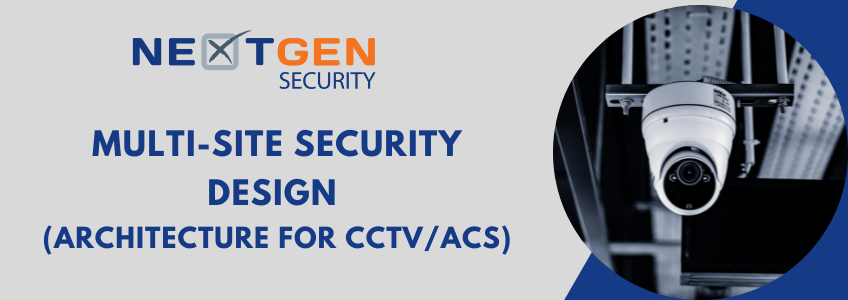Managing security operations across multiple sites can be a heavy lift for many enterprises. The ability to remotely manage and monitor their security systems from multiple video feeds and locations is an ongoing challenge for security managers and monitoring station operators.
Compounding these challenge is the fact that limited budgets are resulting in security teams being asked to deliver more operational efficiencies in their security plans than ever before. This was especially touch when the lockdowns that ensued in the early days of the COVID-19 pandemic left many monitoring stations under-staffed or not even staffed at all but rather, relying on remote monitoring to keep watch over their facilities. And although the constraints of lockdowns took some adjusting to, it showed many organizations that securing multiple locations in a unified or connected manner is, indeed, more doable than they’d thought.
This is thanks, in large part, to the widespread adoption of IP video and access control solutions, coupled with reliable networks and, often times, cloud-based solutions. With lessons learned from the unanticipated pandemic lockdowns, many companies are taking a serious look at how to best manage and unify security across multiple locations. They’ve come to understand that unification of remote locations is a viable and often preferred option.
Intelligent remote video monitoring of multiple sites can be accomplished through a centralized Security Operations Center, SOC. State-of-the-art artificial intelligence surveillance technologies are incorporated to actively monitor and facilities in real-time.
With the assistance of a trusted security integration partner, centralized or remote monitoring is easier than ever to implement, given proper infrastructure considerations, design, and execution. Centralized or decentralized video recording are both considerations depending on a variety of considerations, ranging from available bandwidth to location limitations or capabilities to available onsite personnel.
There are some basic differences between how these two types of IP cameras manage recordings. Centralized cameras store media recordings on a Network Video Recorder (NVR) or Digital Video Recorder (DVR), whereas decentralized IP cameras have a built-in storage feature that enables media to be stored on digital media storage devices. Several media storage options are available for decentralized cameras, which typically can store footage at a higher resolution as they don’t have to deal with bandwidth constraints.
Centralized cameras are better suited for multi IP camera platforms, versus decentralized cameras that perform best in a multi-server environment. As referenced above, decentralized cameras rely on storage devices to maintain media, but this can be problematic when the storage device has reached its maximum capacity. Centralized IP camera users don’t have to worry about this issue nearly as much.
Bandwidth plays a big part in specifying which option is best suited to a particular end user.
IP video is transmitted as a stream of data that contains the image, audio, and control data of the camera. Bandwidth is the amount of data that has to be transmitted per second. Network infrastructure is a critically important aspect of designing a surveillance system, because if bandwidth bottlenecks occur, streaming video will show jitter, delay, or corruption, which can result in a failure for video to record. Consequently, to achieve the most effective remote monitoring capabilities and truly unify multiple locations, there must be enough available bandwidth to support it.
Regardless of whether centralized or decentralized video recording is selected, unification of remote locations provides myriad benefits and an added layer of security to end users and their monitoring teams. Integrated technologies can detect when a security incident occurs and immediately alert the Security Operations Center to respond. Monitoring across multiple site locations is also proving especially beneficial for unmanned, remote sites such as power stations, petro-chem storage and processing locations, gas pipelines, transportation corridors, and more.
NextGen is deeply experienced in implementing remote monitoring technologies. Contact us and learn more about how their capabilities can elevate your security across all your sites.

